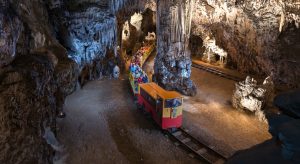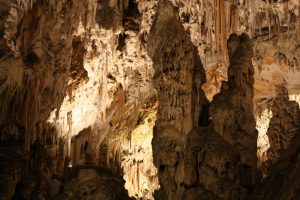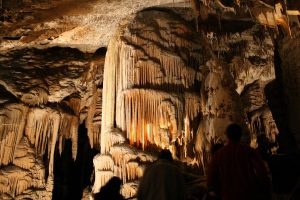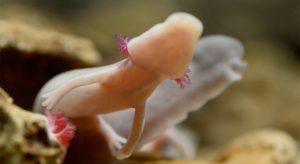Each time I watch a horror movie, scenes tend to remain trapped in my mind for ages, resurfacing when I least expect them. So upon visting Postojna in Slovenia, I couldn’t help but picture The Descent. The film follows six unsuspecting cave explorers who get trapped in an unmapped cave system, where they’re pursued by blood-thirsty Gollum-like creatures.
Postojna is Slovenia’s second largest cave system; 24km of subterranean stalagmite and stalactite filled tunnels and chambers. As a very popular tourist destination, clear pathways are marked along 5km of the cave system. But it doesn’t take much imagination to wonder what could be lurking in its as yet unmapped areas.
If you’re a cave-exploring newbie though, chances are that you won’t be alone. The cave is very accessible (and wheelchair friendly) and was quite full when I visited. A cheery little 1920s train even weaves through 3 km of the tunnel, rapidly switching my experience from The Descent into Disney. At the train stop, tour guides divide visitors according to language and start guided tours through the cave system

The train and walking tour twist past breathtaking stalacites and stalagmites, which have formed over thousands of years. My photographs do not do them justice; nature really is the world’s best artist.
The caves have been formed by the River Pivka. However the stalacites and stalagmites are formed by constantly dripping rainwater, which permeates through the rock from up above. The rock dissolves within the rainwater, which eventually becomes saturated, depositing rock crystals as it drips down onto the cave floor. These crystals pile up to build the startling formations that can be seen today, which are constantly growing as rainwater continues to drip through.
The cave system also houses a fossil exhibit and a vivarium, where I found that my Descent flashbacks were not that far-fetched. Postojna is actually home to olms; cave-dwelling slithery creatures, which are only found in southeastern European caves.
Photo credit: Postojnska Jama
Olms were believed to be baby dragons when first discovered in 1689. Slovenian scientist, Janez Vajkard Valvasor, thought that they would mature in the sea and spend their lives under the Earth’s crust. Unfortunately this romantic myth was dispelled about 200 years later, when olms were officially classified as amphibians. However they are still pretty fascinating creatures.
Adapted to life in complete darkness, olms are blind, but have brilliant hearing and smell to make up for this, which allows them to hunt their prey and navigate the caves. If they can’t find any food, they can go without for at least eight years, without any noticeable ill effects. Each olm lives for about a hundred years, but has offspring only once a decade. And in June of this year, eggs were actually noticed hatching within the Postojna vivarium – a remarkably rare event.
Olms are not the only creatures that call Postojna their home. Their neighbours include insects, shrimp and fish, and scientists have identified bear, hyena and rhino fossils within the caves. In fact Postojna is known as the cradle of speleobiology; the study of subterranean creatures. Who knows what else may be hiding within those as yet unmapped areas?


